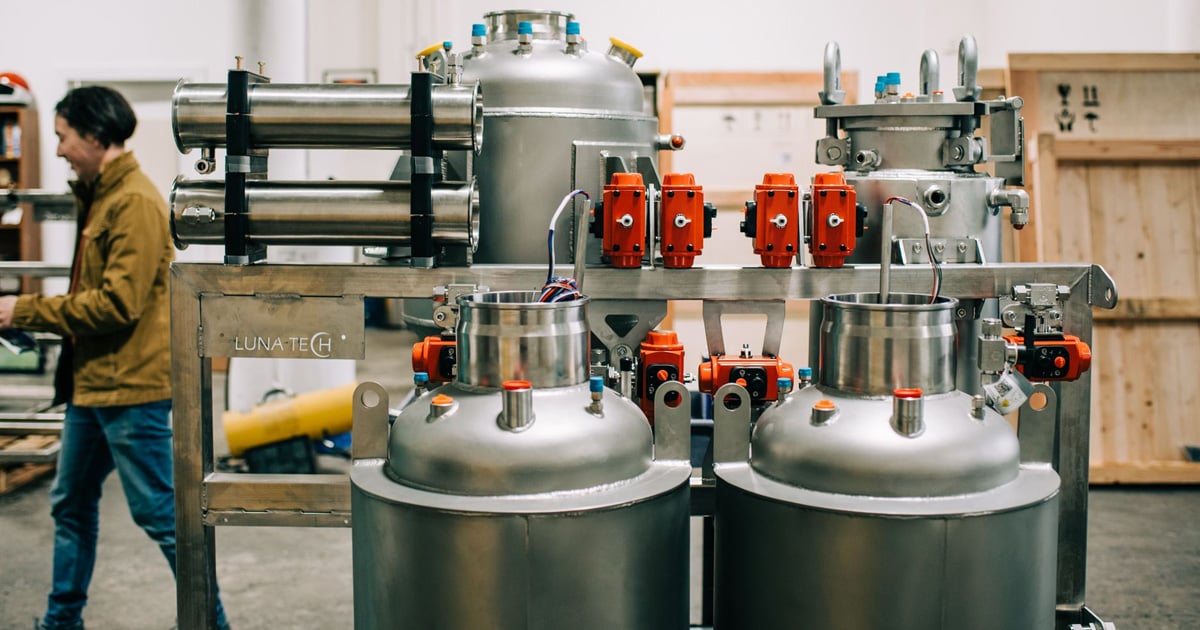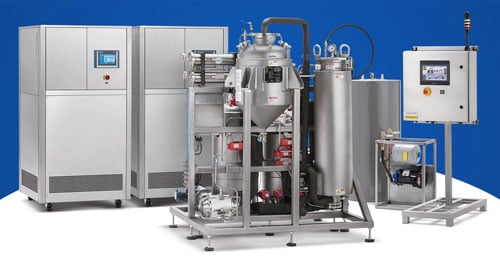Cannabis extracts and concentrates have long been made with solvent-based and solventless methods. Various solvents including butane, carbon dioxide (CO2), and ethyl alcohol can be used to remove the therapeutic cannabinoids from the raw plant matter. One of the most popular and efficient solvents used is butane, because it extracts the full spectrum of terpenes and cannabinoids from the plant, producing high-potency and quality concentrates.
Butane systems have long battled the stigma of safety in production. Professional BHO extractors agree that homemade BHO, usually involving rudimentary “open-air” equipment, inexperienced operators, and a highly flammable environment is a danger to both communities and consumers. Non-professional grade extraction systems that do not meet the high standards for safety and throughput quality are highly dangerous and illegal for good reason.

Time and again, professional extractors have answered the call to improved safety and quality with professional grade hydrocarbon extraction equipment which allows for BHO to be created in a safe and controlled environment. Modern extraction systems, with approved ventilation in a C1D1 booth, gas detection systems, and other safety precautions, make BHO a highly profitable and safe extraction method both from safety and healthy intake standpoint.
Now, BHO/light hydrocarbon extractors are facing another challenging stigma that is also rooted in the amateur extract production market: the fallacy that BHO extraction processes leave behind residual butane in unhealthy levels for the consumer.
Residual Solvents in BHO / Light Hydrocarbon Extraction
In response to (once again) unregulated and unprofessional home production, and to protect the consumer from the potential health risk of residual solvents, states have looked to the pharmaceutical industry to provide a proper context to establish and enforce caps on residual solvent levels in the final product:
The Association of Public Health Laboratories states that “while no health-based solvent residual limits have been established specifically for cannabis extract or concentrate products, practices around pharmaceutical production and limits provide a reasonable model, particularly for the oral route of exposure.”
Ironically, this new standard has not led to a decrease in allowable residual butane in BHO extracts. These state-imposed limits, based on guidelines used by the pharmaceutical industry, now far exceed the level of residual solvents left in industrial extraction, especially with post-process vacuum purges. In some states, including Colorado, the allowable residual butane limit actually increased: from 800 ppm to 5,000 ppm after the pharmaceutical standard was applied.
While this may seem on the surface like a victory for producers, professional BHO extraction facilities feel the pharmaceutical standard is leading us in the wrong direction, as no reputable BHO producer in the industry wants to allow “more” butane in their products.
When purged properly, BHO extractions can, and should, fall well below the required butane ppm limits to almost un-testable limits (0 ppm) by the standard cannabis testing labs. Professional butane extractors don’t just aim for very low residual solvent levels to pass lab testing, but also to improve the extract’s overall quality, taste, and market value. BHO has the unique ability to produce a significantly more robust terpene and cannabinoid profile with no additional processing, and state-of-the-art BHO equipment makes safety concerns obsolete while delivering a very high-quality product.
Residual Solvents in Other Extraction Methods
Light Hydrocarbon, CO2, and Ethyl Alcohol each leave residual traces after extraction, and none are more or less harmful than the other. Winterizing CO2, for example, involves the use of ethyl alcohol, meaning it is not a solventless process. Whether light hydrocarbon, winterized CO2, or ethyl alcohol is used for extraction, the purging process is critical to providing an end product that is safe and without residual solvent. All three methods should strive for zero residual solvents in their products.
Residual Solvent Testing for Light Hydrocarbon
Licensed manufacturers should always submit samples of their cannabis concentrates to a third-party laboratory for residual solvent analysis. Lab testing ensures the product’s butane, propane, or other light hydrocarbon levels fall well below government safety standards.
It is critical for consumers to understand how their vape products and dab products are produced, and looking at your product’s test results will go along way to making sure you are choosing a high-quality safe product.
Residual solvent testing protects consumers and gives manufacturers proof that their product is pure and potent. Residual solvent testing is performed using a headspace sampling process to separate compounds and analyze harmful substances including toxic metals, pesticides, and residual solvents. Cannabis concentrate samples where residual solvents are detected in amounts greater than the ppm limit will fail residual solvent analysis.
BHO Bans
Despite almost zero health risk, many states have considered banning light hydrocarbon extraction altogether due to the unfounded fear of residual solvents and excessive butane open-air pressure. Many states with recreational cannabis laws rightfully ban homemade butane hash oil, as DIY cannabis consumers continue to put their own lives and communities risk. Regulating extraction facilities has helped to soothe consumer fears and improve regulatory oversight.
Much of the fear over BHO could be quelled by not over-licensing extraction facilities and burdening extraction facility inspectors. At the same time, BHO bans turn BHO extractions into illegal operations that can’t be supervised. Today’s innovative BHO extraction equipment effectively eliminates these concerns by using closed-loop processes that reuses solvents, automated systems, and proper purging technique.
Closed-Loop Process
Educating the industry and consumers alike will go a long way toward creating the safest possible process and product for consumption. The fact that Colorado established a health-based limit of 5,000 ppm of residual butane, despite there being almost zero residual solvents in an industrial closed-loop process, is a prime example of the type of challenges facing professional, industrial BHO producers. Some advanced systems have lab reports showing residual butane in the 0 parts per million range with proper vacuum purge procedures. A closed-loop process paired with vacuum purging can achieve immeasurable amounts of residual solvent in the final product, making the existing regulations important, but not relevant to most BHO extractors.
Beyond Residual Solvents
Unfortunately, unwarranted fear could drive manufacturers and consumers away from BHO extracts. The fear of carcinogens and toxins is understandable but entirely unnecessary in a properly regulated medical or recreational market. The shadow cast over hydrocarbon extraction obscures the full-spectrum benefits achieved and obfuscates the truth about its many benefits.
In a world where BHO is a highly scrutinized method of cannabis extraction, new technologies like Luna’s IO are paving the way for a solvent-free concentrate made using solvent-based extractions. Luna Technologies’ fully-automated BHO extraction systems are capable of high yields of aromatic concentrate with full cannabinoid and terpene profiles. Our post-processing workflow purges down any leftover residual solvents to unmeasurable levels (<1ppm).


